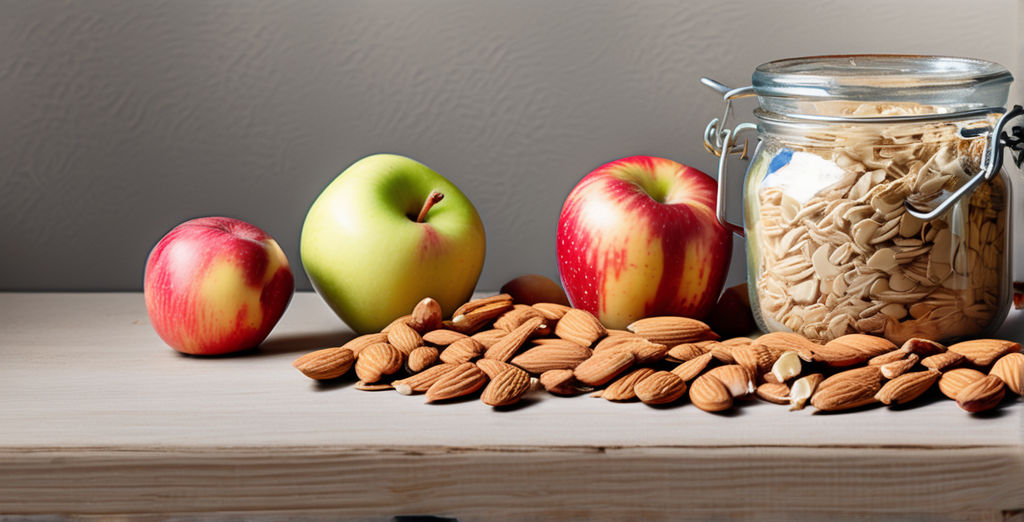Soluble vs. Insoluble Fiber Video
Fiber is a fundamental component of a healthy diet, known for its significant benefits to digestive health, weight management, and chronic disease prevention. However, not all fiber is created equal. Dietary fiber is classified into two categories: soluble and insoluble, each possessing unique properties and health benefits. This blog delves into the differences between soluble and insoluble fiber, exploring their sources, functions, and how they can be incorporated into your diet for optimal health.
What is Soluble Fiber?
Soluble fiber dissolves in water to form a gel-like substance in the digestive system. This type of fiber is known for its role in lowering blood glucose levels and reducing blood cholesterol. It acts by slowing down the rate of digestion, which helps manage blood sugar levels by preventing rapid spikes after meals. Additionally, soluble fiber binds with fatty acids and promotes their excretion, helping to lower LDL (bad) cholesterol.
Sources of Soluble Fiber:
- - Oats and oat bran
- - Nuts and seeds
- - Legumes like beans, lentils, and peas
- - Some fruits such as apples, oranges, and pears
- - Vegetables such as carrots, Brussels sprouts, and sweet potatoes
Health Benefits of Soluble Fiber:
-
1. Lowers Cholesterol: Soluble fiber can reduce the absorption of cholesterol into your bloodstream. It binds with cholesterol particles and helps remove them from the body, lowering total cholesterol levels and reducing the risk of heart disease.
-
2. Regulates Blood Sugar: By slowing the absorption of sugar, soluble fiber helps control blood sugar levels, which can be particularly beneficial for people with diabetes.
-
3. Aids in Weight Management: Soluble fiber absorbs water and expands in your stomach, which can help increase feelings of fullness and reduce appetite.
What is Insoluble Fiber?
Insoluble fiber does not dissolve in water. Instead, it adds bulk to the stool and aids in food's passage through the digestive system, which helps prevent constipation and promotes regular bowel movements. This type of fiber is particularly beneficial for digestive health, as it speeds up the elimination of waste through the colon.
Sources of Insoluble Fiber:
- - Whole grains, such as wheat bran, barley, and brown rice
- - Vegetables such as cauliflower, green beans, and potatoes
- - The skins of some fruits, including grapes and tomatoes
Health Benefits of Insoluble Fiber:
-
1. Promotes Regular Bowel Movements: Insoluble fiber helps to speed the passage of food through the digestive system, reducing the likelihood of constipation.
-
2. Prevents Digestive Disorders: Regular intake of insoluble fiber helps prevent various digestive problems, including diverticulitis and hemorrhoids.
-
3. Supports Intestinal Health: By helping to speed up the elimination of waste through the colon, insoluble fiber helps prevent microbes from staying too long in the intestines, which can be beneficial in reducing the risk of colon diseases.

Balancing Soluble and Insoluble Fiber in Your Diet
For optimal health benefits, it's important to include both types of fiber in your diet. A well-rounded diet that includes a variety of fruits, vegetables, whole grains, nuts, and seeds will naturally provide a healthy balance of soluble and insoluble fibers. The recommended daily intake of fiber is about 25 grams for women and 38 grams for men, according to the American Dietetic Association.
How to Incorporate More Fiber into Your Diet
Increasing your fiber intake can be easy and delicious. Here are some tips to incorporate more soluble and insoluble fibers into your diet:
- - Start your day with fiber: Choose a breakfast cereal that contains at least 5 grams of fiber per serving, like oats or bran flakes.
- - Snack on fiber-rich foods: Opt for raw vegetables, nuts, fruits, or whole-grain crackers instead of processed snacks.
- - Add legumes to your meals: Include beans, lentils, or chickpeas in your soups, stews, and salads.
- - Choose whole fruits over juice: Eating whole fruits provides more fiber, especially if you consume the edible skins.
- - Select whole grain options: Replace white bread, pasta, and rice with their whole-grain counterparts.
- - Stay Hydrated: Drinking plenty of water is important when increasing your fiber intake to help manage digestion and prevent constipation.
Conclusion
Both soluble and insoluble fibers are essential for health, but they serve different purposes within the body. By understanding the roles and sources of both types of fiber, you can better tailor your diet to support digestive health, manage weight, and reduce the risk of disease. Emphasizing a diet rich in whole foods like fruits, vegetables, legumes, nuts, and whole grains will help ensure a healthy balance of soluble and insoluble fiber, contributing to overall wellness.
Disclaimer: This blog post is for informational purposes only and does not constitute medical advice. Always consult with a healthcare professional or a registered dietitian before making significant changes to your diet, especially if you have specific health conditions or dietary needs.
Ready to level-up?
Create meal plans 10x faster, follow up with your clients through our mobile app, and never struggle with meal planning or recipe management again.